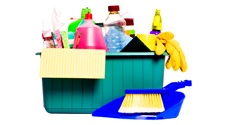
07 Jul Chemicals
DID YOU KNOW
Almost 90% of ingredients used in cosmetics and personal care products have not been safety tested for human health effects.
Every 60 seconds, another 20 chemicals are registered for use on the world’s largest database: the Chemical Abstract Service. To put that into context, that’s over 200,000 new chemicals every week. There are currently over 113 million chemicals registered for use on this database which include both man-made (anthropogenic) and natural sources. Up to 90% of the man-made chemicals, have never been tested for their impact on human health. WHY? because the burden of proof is not on industry to prove that their new chemicals are safe, which means researchers, governments and non-governmental agenices can spend years, decades and even generations to prove whether these chemicals are safe or harmful. Sadly the history of medical care is littered with examples of missed opportunities, wasted resources and counter-productive policies due to their inability to act on available evidence at the expense to human lives. Tobacco smoke, asbestos, leaded paint, benzene, polychlorinated biphenyls, pesticides, vinyl chloride, BPA.. are just some examples where warnings were ignored decades prior to the emergence of devastating public health issues. Read: Late lessons from early warnings. Read my Review Article pubished in a Swiss Journal on the issue of environmental chemicals, where they are, what diseases they are affiliated with and what clinicans need to do to address the situation. This paper was coauthored by Professor Marc Cohen.
Read: Bijlsma N & Cohen M. (2016). Environmental chemical assessment in clinical practice: Unveiling the Elephant in the Room. 13(181). Int J. Environ. Public Health.
Sources of Chemicals
Here is a partial list of chemicals likely to be in your home. For a detailed discussion on these and many other sources such as toys, pesticides, food packaging, cookware, clothing, bedding and the like, refer to the book Healthy Home, Healthy Family.
- Vehicle exhaust kills more people in Australia than deaths arising from the road toll!
- Fake tan products
- Hormone disrupting chemicals in household products (why pregnant women, children and people with breast and prostate cancer should avoid)
- Cleaning products
- Makeup – “saving face”
- Personal care products
- Pesticides
- Plastics
- Plastic baby bottles
- Building materials
- Sunscreens
- Non-stick cookware
How Toxic are Your Products?
Where personal care products list their ingredients on the packaging, manufacturers of cleaning products are not obliged to. As such you don’t know what you are really being exposed to. There are 3 ways to assess how toxic the ingredients in your product are:
- Check the label on your cleaning product for warning signs such as POISON, TOXIC, CAUTION, CORROSIVE or WARNING.
- Skin Patch Test When using a product for the first time, it is always recommended that you do a skin patch test. Apply a small amount of the product on the pulse area of your wrist. Leave on up to 48 hours (unwashed). If the skin becomes itchy, red, and/or painful you are likely to be allergic to it and need to remove it immediately.
- Obtain the Safety Data Sheet for the product directly from the manufacturer whose details will be on the label. Once you have the list of ingredients in the product, you will need to obtain the Safety Data Sheet (SDS) for each individual ingredient. Here is a brief list of potential websites where you can access this information.
- ChemSupply: www.chemsupply.com.au
- Environmental Working Group: www.cosmeticsdatabase.com
- MSDSXchange: www.msdsxchange.com/english/index.cfm
- National Library of Medicine: www.householdproducts.nlm.nih.gov/index.htm
- Scorecard: www.scorecard.org
- Toxicology Data Network: http://toxnet.nlm.nih.gov
Testing Chemicals
There are a variety of means by which a building biologist can assess chemicals in a building. Most requires sophisticated and expensive equipment. The cost will vary depending on the type of chemical you wish to assess and whether you want instant results or require data logging capabilities. For details, click here.
SOLUTIONS
When it comes to volatile organic compounds the warmer the room, the greater the rate at which they “outgas” into the air. New building materials and paints can take years to off gas. As such, ventilation is the key to reducing one’s exposure especially in a new or recently renovated building.
WANT TO LEARN MORE?
Courses:
